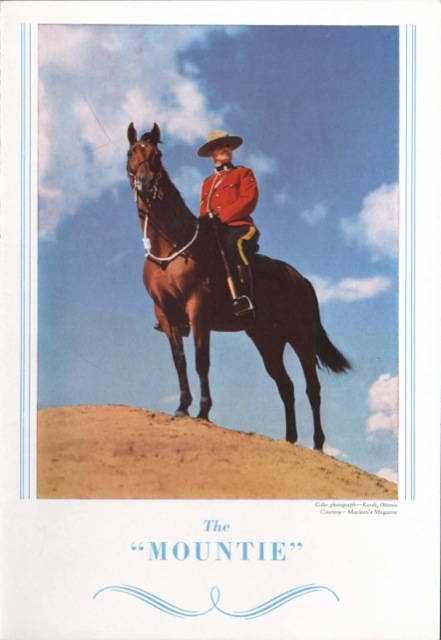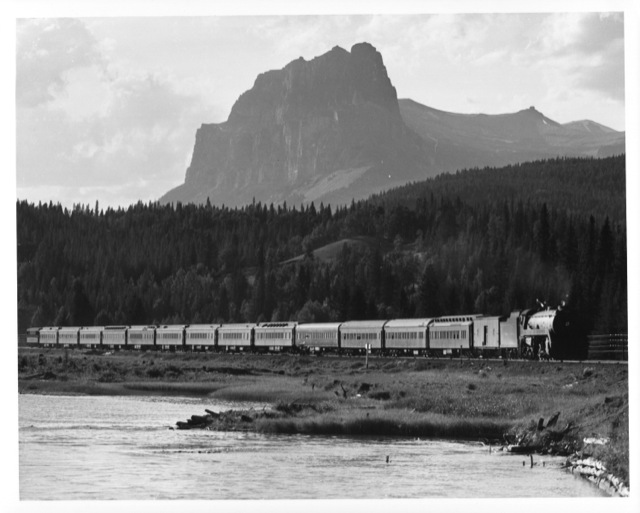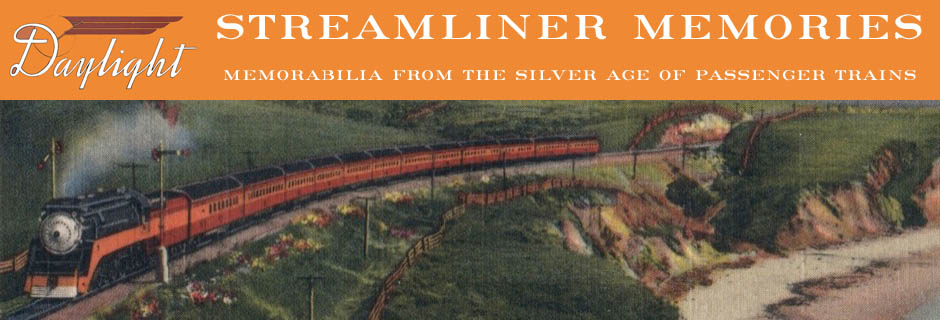The scarlet jacket of the RCMPs, or mounties, is known throughout the world, and Canadian Pacific loved to show it off in its advertising. Beneath the photo on this 1941 menu are the words, “Karsh Ottawa, Courtesy McLean’s Magazine.” Karsh is not a location but the name of Canada’s soon-to-be best-known photographer, Yousuf Karsh. Karsh was a relative unknown when this menu was issued, but a few months after it came out, he took a photo of Winston Churchill that has been called the most reproduced photo in the world and that made Karsh internationally famous.
 Click image to download a 1.4-MB PDF of this menu.
Click image to download a 1.4-MB PDF of this menu.
The menu itself has a table d’hôte side that features meals for either $1 or $1.25 ($12.50 or $15.50 today). The $1 meals offer a choice of Lake Winnipeg goldeye, halibut, whitefish, or Lake Superior trout. The $1.25 meals include curried chicken, roast leg of lamb, beef ribs, or cold meats. The a la carte side includes any of the fish from the table d’hôte side for 50 cents, plus Canadian Pacific’s dizzying array of other entrées: steaks, ham, bacon, lamb chops, and various egg dishes.

Click image for a larger view.
The above photo shows the Dominion with Mt. Eisenhower in the background. The train of thirteen steel passenger cars, an express car, and an open-air observation car was all easily pulled through the mountains by the Selkirk locomotive. Originally named Castle Mountain, Canada Prime Minister William Mackenzie King renamed it to honor the American general in 1946. Albertans preferred the older name and it was renamed Castle Mountain in 1979. However, the right-most prominence in the photo retains the name Eisenhower Peak.

Still with the tongue and sardines on the a la carte side. Apparently Canadian sardines must have tasted pretty bad compared to the imported variety, which was twice as expensive as the crummy Canadian fish. I wonder where they were imported from? I suspect Portugal, which had a large share of the world’s non-crummy sardine market in 1941.
I was finally able to track down “Red Label” beef. I thought it was some Canadian company with a red label, kind of like Swift in the US. Turns out it’s not a company at all, but an official beef grade in Canada in the period before about 1965. Red label beef was the equivalent of choice or prime graded beef in the US. As far as I can tell, the system was blue, green and red label. The blue label grade was about like trying to eat a shoe from what I can surmise, and very few stores sold it, and then only for cuts you’d pound and boil for about two days. Green label was about like US standard grade.
There is still red label beef in Canada but, now it comer in four grades ranging from A to AAA, with Canada Prime being the highest quality. It only comes from the “most youthful carcasses”, according to the Canada Beef Board, so I guess Canada Prime beef come from little little kid cows. There’s a grand total of 13 beef grades in Canada now, and you need a cart and cross reference to figure out what they mean. It seems as if the same committee that designed the Canadian postal code system also did the beef grading system.
Jim